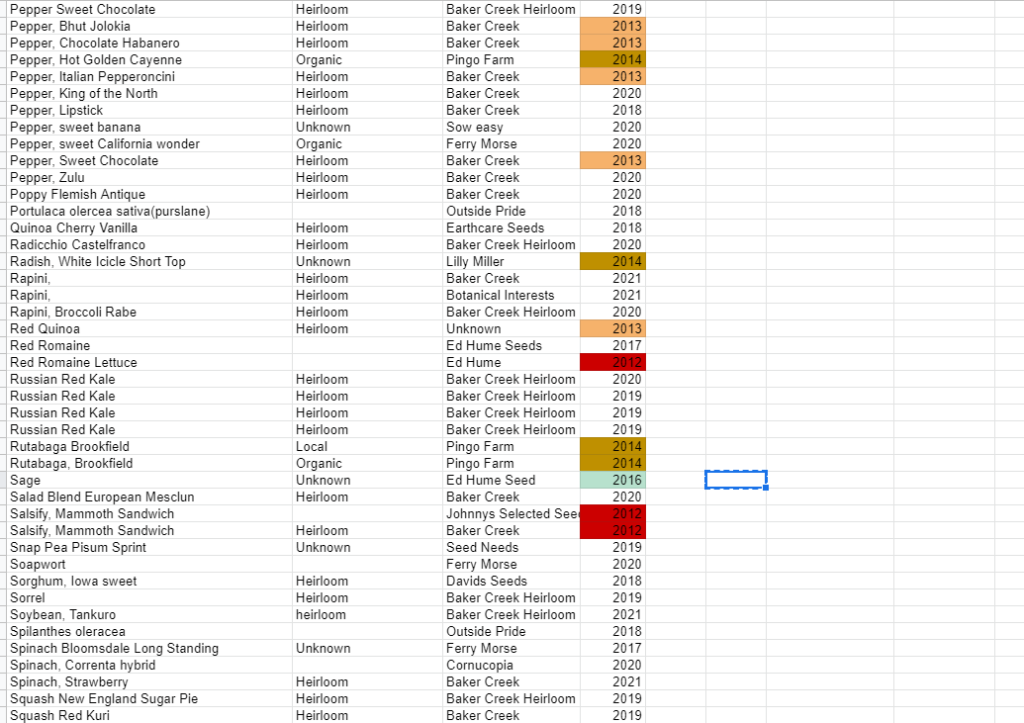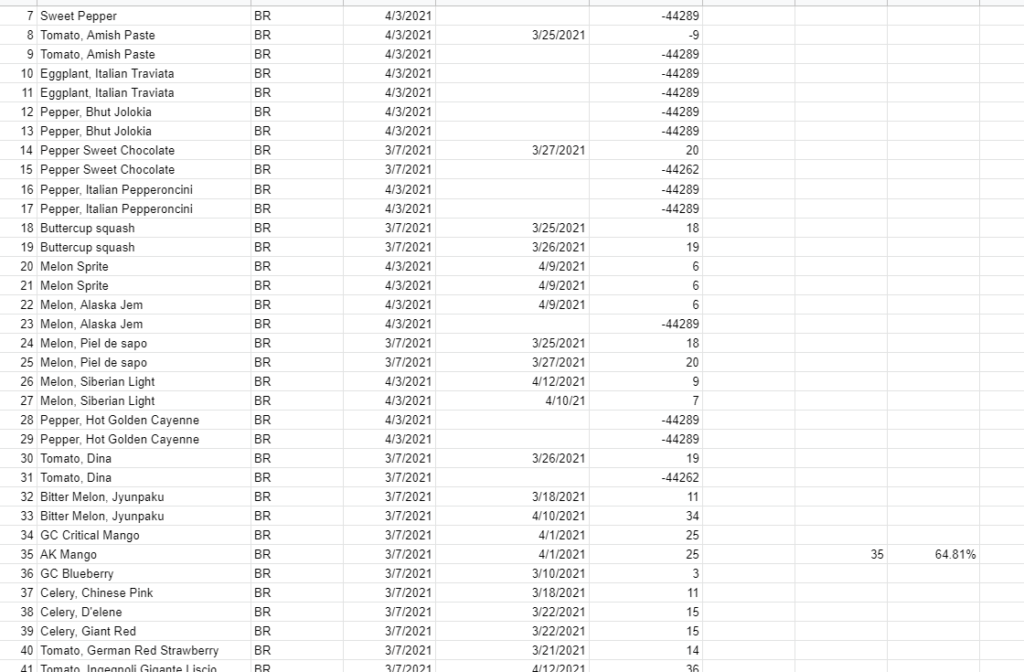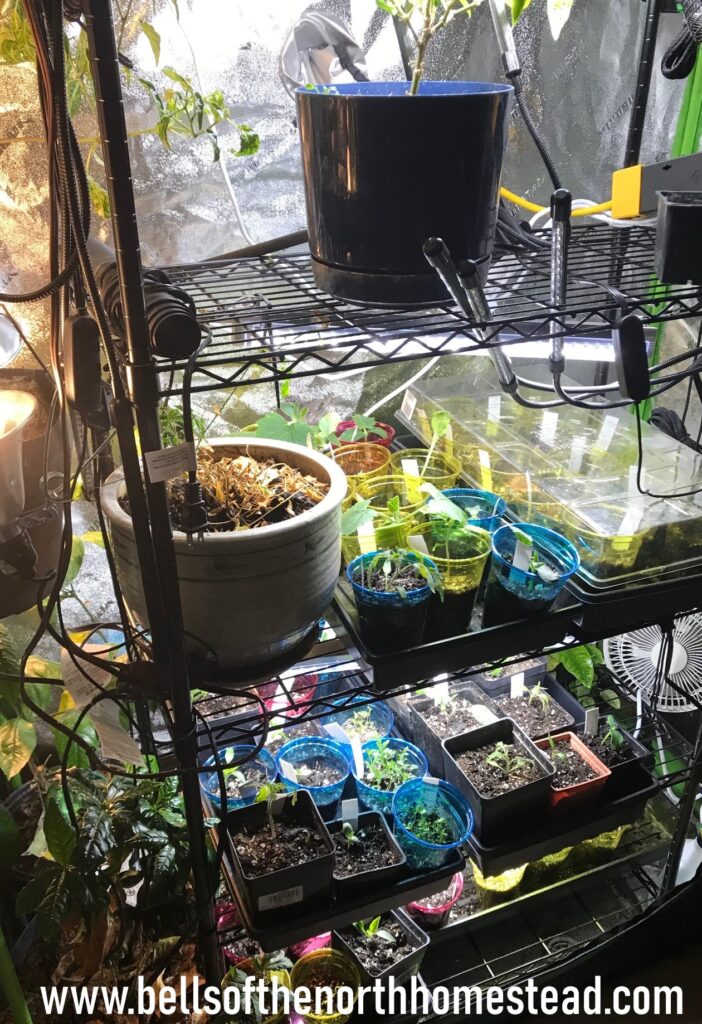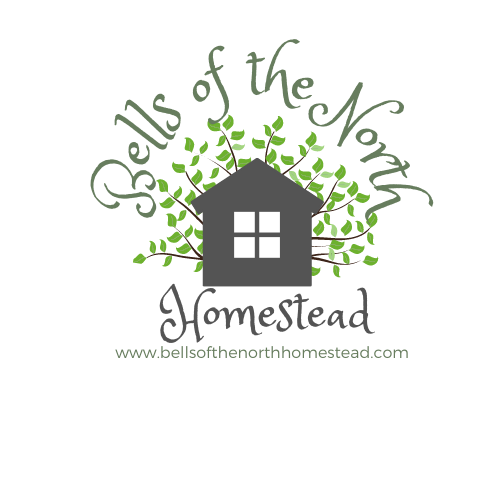Great Results on seed starting
We’ve now had a portion of our seeds started since early March and considering that many of these seeds were over 5-7 years old, we’ve had great results on our seed starting! Unfortunately, seeds lose their viability as they age. This means their ability to germinate will reduce. Just like in previous years, we went through our entire seed catalog of stored seeds (which includes over 245 different varieties of seeds!) and once again separated the seeds that are required to be started this year just due to their age. Some of these have been with me since I first started this blog under its previous name “How Does our Garden grow” so they are pretty ancient!
Thankfully, a couple of years ago I created an excel log that helps us keep running inventory or our seeds. On this, I track the seed company, if it’s Heirloom or Organic, when was it purchased or what batch year it belongs to, and then I color code the year. If it’s from more than five years back then the formatting in my excel form highlights it. This makes it easier come planting time to specify which seeds are badly needing to be planted. We are able to go through our list and develop a game plan or schedule for planting. In previous years we have not done this and it resulted in some plants badly needing to be moved out before it was time and others were stunted because of lack of light or space.
Seed rotation is boring
Now the only negative to this method of seed rotation is sometimes, I spot certain varieties in seed catalogs that I or my husband declare we must try. This means we have to be selective about which seeds are started each year. We have very limited real estate for seed starting. Case in point, we noticed Baker Creek Heirloom seeds sells a pepper called “King of the North” and being Game of Thrones fans, and on top of that, the pepper grows well in Northern Climates we HAD to purchase it. Like I kid you not, they twisted our arm. Just kidding.

Seed starting with old seeds
So like I mentioned above, seeds do lose their ability to germinate over time. We typically keep ours in a cool but not frozen area because then the temperature fluctuates too much. In order to maintain seed viability, it’s best to store them in cool, constant temperatures with low humidity. If you store in an area where the temperature fluctuates or you have high humidity, you will most likely have less than great results on seed starting. I use something rather like what I have linked below. I find this is a pretty reliable way to store seeds with only one drawback. If anyone takes seeds out and adds new seeds and never updates the log, well then you’re going to be playing a game of “WHAT SEED IS THIS?” I’ve written more extensively about this method of storing seeds here.
So far we’ve had a successful germination rate of 64% which I consider good! Especially with the age of some of these seeds! We’ve had to reseed a couple of pots which has thrown off our numbers some. Overall, for being mostly old seeds we’ve had great results in our seed starting this year! I’ve added a very simple calculator on my excel log that adds up all the seeds I’ve started. It then calculates the percentage for me. This way I have a constant running total or percentage of success or failure. I also have a calculator to the side to determine what the germination time was for each one. This alerts me from year to year if we’re losing the viability of the seeds. I keep this workbook as a form of record-keeping.
Record keeping is a must!
I always recommend keeping massive records as a way to help ensure you’ll have more success in your garden! If I see that a seed from year to year seems to be having longer and longer germination times then I know that I will absolutely have to plant that and not expect to have it in my inventory within the next year. It also alerts me if I need to buy more. For instance, my log just alerted me that I used up all of my favorite tomato seeds, Amish Paste. Thankfully, I had the log that alerted me! So I’ll be buying some more of those seeds shortly! Remember, always, always keep records of what you are doing from year to year. This assists you in following your owns successes and failures. Without this, it is hard to remember exactly what worked and why.

Great results on SOME seed starting
Some seeds, like cucumbers, melons, tomatoes, and celery are easy to start. Others, not so much. Peppers, both sweet and hot, along with eggplant are notoriously tricky. They require large amounts of heat to get that seed to wake up and germinate! We currently use our boiler room for the first stage of growth because it is the warmest area. Even with the heat of the boiler room, sometimes we have to pull out our heated seed starting mat if we want to get great results on our seed starting. When the small seedling pops through the soil, it then graduates to the next stage. The greenhouse. I always look forward to finding new seedlings that get to graduate! It’s like I’m handing them a diploma or something, but then I’m odd like that!

Here the plants sit in what I call “preschool”. This year we have upped our game some since we got our new outdoor greenhouse last year! In approximately 3-4 weeks the plants that are hardy enough will be moved out to the outside greenhouse where they will begin hardening off. We’ll be making a homemade rocket stove that I’ve mentioned in this post. That will assist us in getting a bit more heat inside thereby protecting the tender seedlings. This will also allow us to start the last stage of planting seedlings which will be beans, peas, herbs, and kale. With this method, we can time everything (hopefully) in a sort of Goldilocks sort of way! You know, just right!


